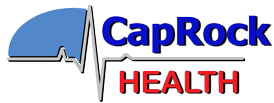Strokes are a leading cause of death and disability. Fortunately, there are things we can do to minimize the risk of a stroke and improve outcomes if one occurs. Recognizing the symptoms of a stroke is key to ensuring timely intervention and minimizing long-term damage. In this blog post, we’ll delve into the various signs that could indicate a stroke, empowering you with the knowledge needed to act swiftly in the face of this medical emergency.
Understanding the Basics of Stroke
A stroke occurs when the blood supply to the brain is disrupted, either due to a blockage (ischemic stroke) or bleeding (hemorrhagic stroke). The brain requires a constant flow of oxygen and nutrients, and any interruption can lead to damage or death of brain tissue. This process is similar to what happens during a heart attack. A heart attack occurs when blood flow to the heart is disrupted resulting in damage to the heart. Some experts prefer to call strokes “brain attacks” to emphasize the importance of treating both potential heart attacks and potential strokes with equal urgency.
Common Risk Factors for Stroke
1. High Blood Pressure – The most common stroke risk factor is high blood pressure. Since elevated blood pressure is usually asymptomatic, it is often referred to as the “silent killer.” Persistent elevated blood pressure weakens the arteries over time, making them susceptible to ruptures or blockages that can precipitate a stroke. If blood pressure becomes extremely elevated, blood vessels in the brain can rupture causing bleeding and damage to brain tissue. Regular monitoring and management of blood pressure are crucial components of stroke prevention since blood pressures are often elevated without any symptoms.
2. Diabetes – Diabetes, particularly when uncontrolled, poses a significant threat to vascular health, including vessels in the brain. Elevated blood sugar levels contribute to the formation of arterial plaques (blockages) and arterial damage, amplifying the risk of both ischemic (blockage) and hemorrhagic (bleeding) strokes. Maintaining optimal glucose levels through lifestyle modifications and medication is key in mitigating this risk.
3. Tobacco and Smoking – Smoking and tobacco use introduce a multitude of harmful chemicals into the bloodstream, accelerating the formation of arterial plaques and damage. Nicotine, a vasoconstrictor, elevates blood pressure, while the carbon monoxide in smoke reduces the oxygen-carrying capacity of the blood. Together, these factors create a hazardous environment conducive to not only strokes but can also increase your risk of developing COPD and heart disease. Quitting smoking is a pivotal step in reducing this risk. Furthermore, avoiding secondhand smoke is almost as important.
4. High Lipid Levels – Elevated levels of cholesterol and triglycerides, specifically low-density lipoprotein (LDL) or “bad” cholesterol, contribute to the buildup of fatty deposits in the arteries (plaques). These deposits, known as atherosclerosis, can impede blood flow to the brain, culminating in an ischemic stroke (blockage). Adopting a heart-healthy diet and prescribed medications can help control cholesterol levels and mitigate this risk.
5. Sedentary Lifestyle and Obesity – Lack of physical activity and obesity create a perfect storm for stroke risk. Sedentary lifestyles contribute to weight gain, elevated lipid levels, high blood pressure, and diabetes, all of which are independent risk factors for strokes. Regular exercise and maintaining a healthy weight significantly reduce stroke risk.
Common Symptoms of Stroke
1. Sudden Numbness or Weakness – One of the hallmark signs of a stroke is the sudden onset of numbness or weakness, often on one side of the body. This can affect the face, arm, or leg and may be accompanied by visible drooping, noticeable weakness, or just a heavy sensation.
2. Trouble Speaking or Understanding Speech – Difficulty in forming coherent speech or understanding spoken language can be indicative of a stroke. Slurred speech, confusion, or the inability to find the right words are red flags.
3. Vision Disturbances – Blurred or double vision, sudden visual impairment, or difficulty focusing on objects can be signs of a stroke. Individuals may also experience a sudden loss of vision in one or both eyes.
4. Severe Headache – A sudden and severe headache, often described as the worst headache of one’s life, can be a symptom of a hemorrhagic stroke. This should always prompt immediate evaluation in the ER.
Acting FAST in a Stroke Emergency
Recognizing the symptoms of a stroke is only the first step; the next crucial step is to act swiftly. Remember the acronym FAST:
Face: Ask the person to smile. Does one side of their face droop?
Arms: Have them raise both arms. Does one arm drift downward?
Speech: Ask them to repeat a simple phrase. Is their speech slurred or strange?
Time: If you observe any of these signs, it’s time to call emergency services immediately. Time is critical in stroke cases, and prompt medical attention can make a significant difference in outcomes.
Seeking Immediate Medical Attention
Stroke symptoms should never be ignored or taken lightly. The longer the blood flow to the brain is disrupted, the more damage that will result. The best outcomes occur when strokes are treated within the first 3 hours of symptoms, and the sooner the better. So never wait to see if the symptoms just resolve on their own! If you or someone around you is experiencing the signs or symptoms mentioned above, call emergency services without delay as driving while having a stroke is not safe. Quick action can help minimize the damage caused by a stroke and improve the chances of a full recovery.
Conclusion
At CapRock Health, we are committed to promoting awareness and providing top-notch medical care. Recognizing the symptoms of a stroke and acting swiftly can save lives. As we embark on a new year, let’s prioritize our health and that of our loved ones by staying informed and proactive. Remember, understanding the symptoms of a stroke is the first step toward a healthier and safer future.

